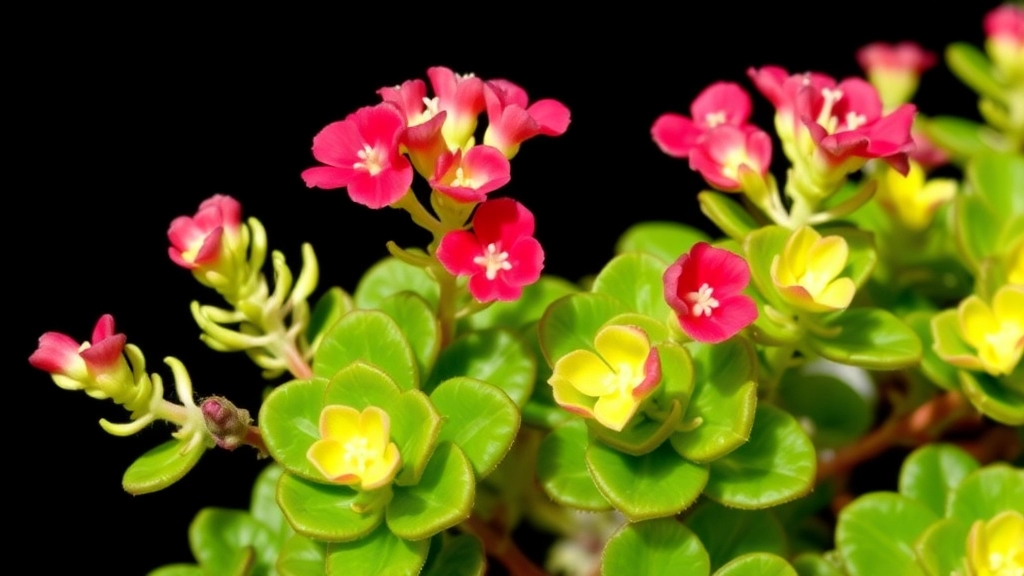Kalanchoe Mother of Thousands
If you’re fascinated by unique succulents, the Kalanchoe Mother of Thousands is a must-have for your collection. This intriguing plant, known for its ability to produce tiny plantlets along the edges of its leaves, offers both beauty and a bit of a challenge. From understanding its light and temperature needs to mastering the art of propagation, there’s plenty to learn about keeping this plant thriving.
Care Tips
One of the first things to know about the Mother of Thousands is its preference for bright, indirect light and well-draining soil. Overwatering can be a common pitfall, so it’s crucial to let the soil dry out between waterings. Additionally, this plant can be quite invasive, so managing its growth and spread is essential. Whether you’re a seasoned gardener or a succulent newbie, these tips will help you keep your Kalanchoe Mother of Thousands healthy and vibrant.
Common Characteristics of the Mother of Thousands Plant
Are you curious about what makes the Mother of Thousands plant so unique? This fascinating succulent, known scientifically as Kalanchoe daigremontiana, is renowned for its striking features and remarkable propagation abilities.
Ideal Growing Conditions: Light and Temperature
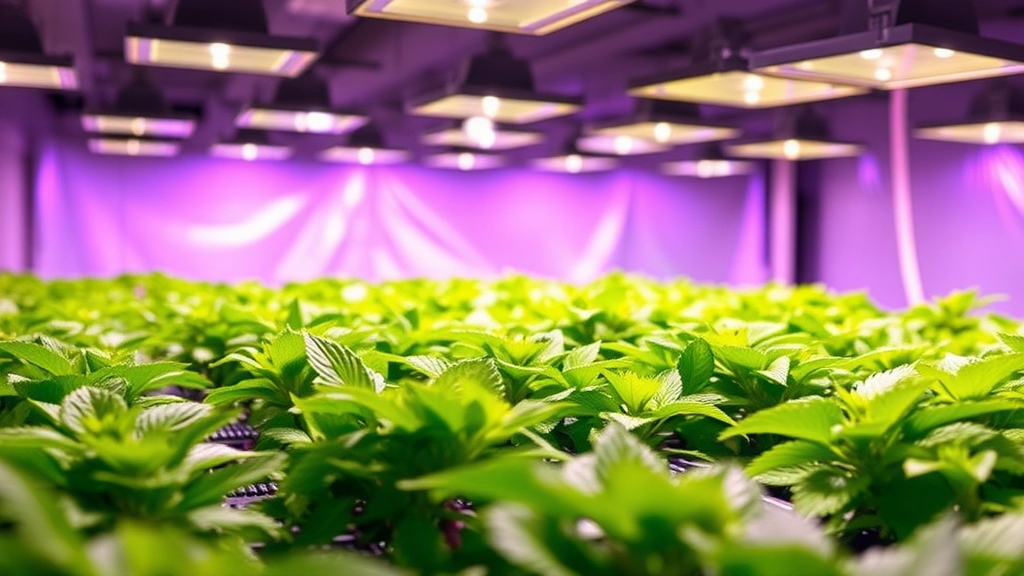
So, you’ve got your Mother of Thousands plant and you’re wondering how to keep it thriving, right?
Let’s dive into the ideal light and temperature conditions that’ll make your plant as happy as can be.
Light Requirements
- Bright, Indirect Light: This plant loves bright spots but can’t handle harsh, direct sunlight. Think of a cozy window with filtered light.
- Some Tolerance for Shade: It can survive in lower light conditions, but you might not see as much growth or those lovely plantlets.
- Rotate Regularly: If you want a balanced look, give your plant a little spin every couple of weeks. This helps it grow evenly.
Temperature Preferences
- Ideal Range: Mother of Thousands thrives between 20-30°C (68-86°F).
- Avoid the Cold: It’s not a fan of frost. If temperatures dip below 10°C (50°F), it’s time to bring it indoors.
- Humidity: This plant isn’t too fussy about humidity levels, making it perfect for most homes.
Best Soil Types for Healthy Growth
When it comes to nurturing your Mother of Thousands plant, the right soil is paramount. Many plant enthusiasts often wonder what kind of soil will allow their plant to thrive.
Ideal Soil Composition:
- Well-Draining Soil: The Mother of Thousands prefers a soil mix that drains well to prevent root rot. A blend that allows excess water to escape is crucial.
- Cactus Mix: A pre-made cactus or succulent mix is often perfect. These mixes are designed to provide the right balance of drainage and nutrients.
- DIY Soil Mix: If you prefer to create your own, consider combining:
- 50% potting soil
- 25% perlite or pumice
- 25% coarse sand
pH Level:
Aim for a slightly acidic to neutral pH, ideally between 6.0 and 7.0. This range supports healthy nutrient uptake.
Nutrient Considerations:
While Mother of Thousands does not require overly rich soil, incorporating organic matter, like compost, can enhance growth without overwhelming the plant.
Container Choice:
Ensure that pots have drainage holes. This is essential for preventing water from pooling, which can lead to root issues.
Watering Requirements and Tips
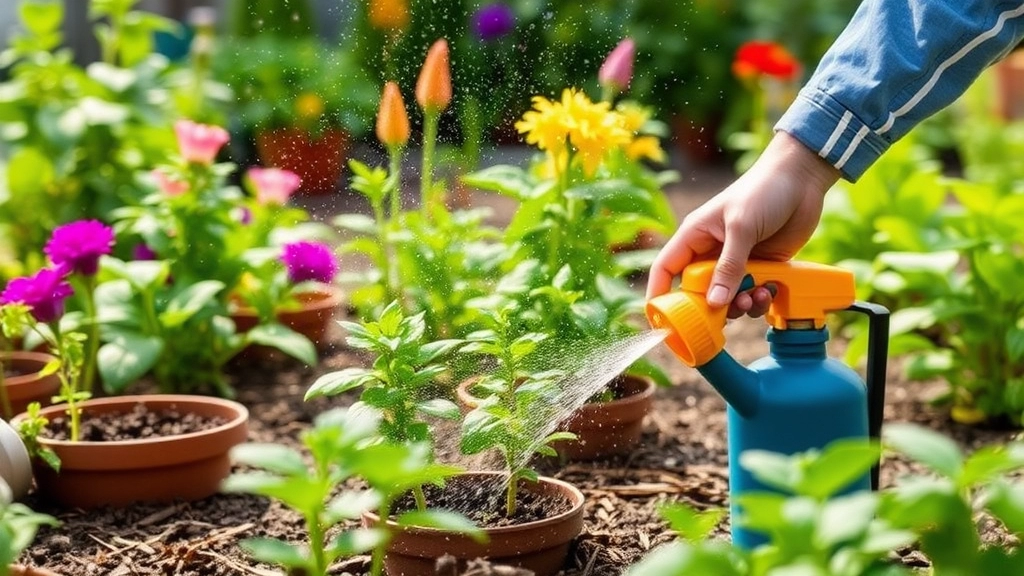
When it comes to nurturing your Mother of Thousands plant, understanding its watering needs is crucial for its thriving growth. Many plant enthusiasts often wonder, “How much water does my Mother of Thousands really need?”
Watering Guidelines:
- Frequency: Water your plant only when the top inch of soil feels dry. This typically translates to every 2-3 weeks, depending on the season and climate.
- Method: Use the soak-and-dry method. Water thoroughly until it drains out of the bottom, then allow the soil to dry completely before the next watering.
- Signs of Overwatering: Yellowing leaves and mushy stems are red flags. If you notice these, reduce your watering frequency.
- Signs of Underwatering: If the leaves appear shriveled or wrinkled, it’s time to give your plant a drink.
Tips for Effective Watering:
- Use Well-Draining Soil: This helps prevent water from pooling and causing root rot.
- Check Humidity Levels: Mother of Thousands prefers low humidity. If you live in a humid area, you may need to adjust your watering schedule accordingly.
- Seasonal Adjustments: In the growing season (spring and summer), your plant may require more frequent watering. During dormancy (fall and winter), reduce watering significantly.
How to Propagate Mother of Thousands from Plantlets
Many plant enthusiasts wonder how to propagate Mother of Thousands effectively. This plant is renowned for its ability to produce numerous plantlets, making propagation an exciting and straightforward process.
Understanding Plantlets
Mother of Thousands, or Kalanchoe daigremontiana, produces small, baby plants along its leaf edges. These plantlets can be easily detached and rooted to create new plants.
Steps for Propagation
- Select Healthy Leaves
Choose mature leaves with plenty of plantlets.
Ensure they are free from pests and diseases. - Detach the Plantlets
Gently twist or cut the plantlets from the leaf.
Aim to leave a small portion of the plantlet attached for better rooting. - Allow to Callous
Place the detached plantlets in a dry, shaded area for a few hours.
This helps prevent rot when they are planted. - Prepare Potting Soil
Use a well-draining soil mix, such as cactus or succulent soil.
You can also create your own mix by combining potting soil with sand or perlite. - Plant the Plantlets
Insert the plantlets into the soil, ensuring they are stable but not buried too deep.
Space them apart to allow for future growth. - Water Sparingly
Lightly mist the soil to provide moisture without overwatering.
Keep the soil slightly damp until the plantlets establish roots. - Provide Ideal Conditions
Place the pots in bright, indirect light.
Avoid direct sunlight, as it can scorch the delicate plantlets. - Monitor Growth
After a few weeks, check for root development by gently tugging on the plantlets.
Once they are firmly rooted, you can treat them as mature plants.
For more detailed care instructions, you might find our Mother of Thousands care guide helpful. Additionally, understanding the causes and solutions for black spots on Kalanchoe leaves can help you maintain healthy plants.
Managing Overgrowth and Invasiveness
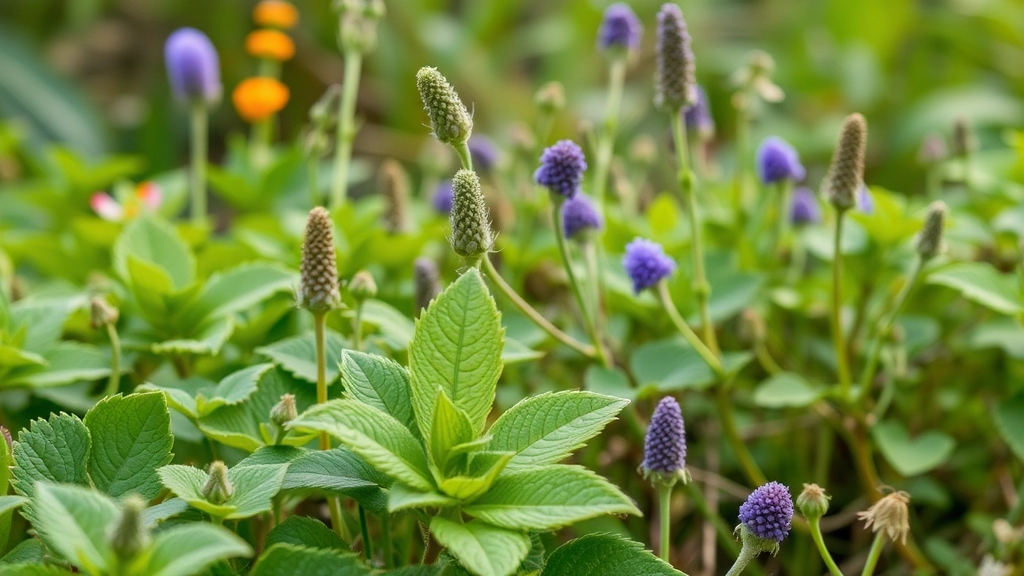
So, you’ve got your Mother of Thousands thriving, and now you’re faced with a common dilemma: overgrowth.
Why Is This a Concern?
Mother of Thousands can quickly take over your garden or indoor space. Those little plantlets can spread like wildfire, and before you know it, you have a mini jungle on your hands.
Here’s how to keep it in check:
- Regular Monitoring: Keep an eye on your plant. Check weekly for any new plantlets sprouting up.
- Physical Removal: Don’t hesitate to pull out unwanted plantlets. They’re easy to remove, and doing so will help control their spread.
- Container Gardening: Consider keeping your Mother of Thousands in a pot. This way, you can limit its growth and easily manage any overgrowth.
- Mulching: If you plant it in the ground, use mulch. It can help suppress unwanted seedlings.
- Barrier Methods: Use landscape fabric or a similar barrier to block the roots from spreading too far.
- Plan Your Space: Think about where you place your Mother of Thousands. Avoid areas where you want to maintain a tidy look.
Managing overgrowth doesn’t need to be a headache. With these simple strategies, you can enjoy the beauty of your Mother of Thousands without it taking over your life—or your garden.
Pruning and Maintaining the Plant’s Shape
After understanding how to manage the overgrowth of your Mother of Thousands, it’s essential to focus on pruning and maintaining the plant’s shape to ensure it thrives beautifully.
Why Prune?
Pruning is crucial for several reasons:
- Encourages Healthy Growth: Removing dead or damaged leaves allows the plant to redirect energy to healthier parts.
- Prevents Overcrowding: This plant can become bushy, and pruning helps maintain its shape.
- Enhances Aesthetics: A well-shaped plant is visually appealing and can become a focal point in your garden or home.
When to Prune
- Spring: This is the ideal time to prune, as the plant is waking up from dormancy.
- After Flowering: If you notice flowers, prune after they’ve faded to redirect energy.
How to Prune
- Gather Your Tools: Use clean, sharp scissors or pruning shears to avoid damaging the plant.
- Identify Problem Areas: Look for:
- Yellowing or wilting leaves
- Leggy growth
- Overcrowded sections
- Cut Strategically:
- Trim back any unhealthy leaves.
- Thin out crowded areas to allow light and air to reach the inner parts of the plant.
- Cut stems just above a leaf node to encourage new growth.
Maintaining Shape
- Regular Check-ups: Inspect your plant every few weeks, especially during the growing season.
- Adjust as Needed: If you notice uneven growth, don’t hesitate to prune more to maintain balance.
By incorporating these pruning practices, you’ll ensure your Mother of Thousands remains healthy and well-shaped. For more detailed tips, you can refer to this complete care guide for Kalanchoe Tubiflora. Additionally, understanding the side effects and risks of Kalanchoe Pinnata can further help in maintaining a healthy plant environment.
Fertilizing for Optimal Growth
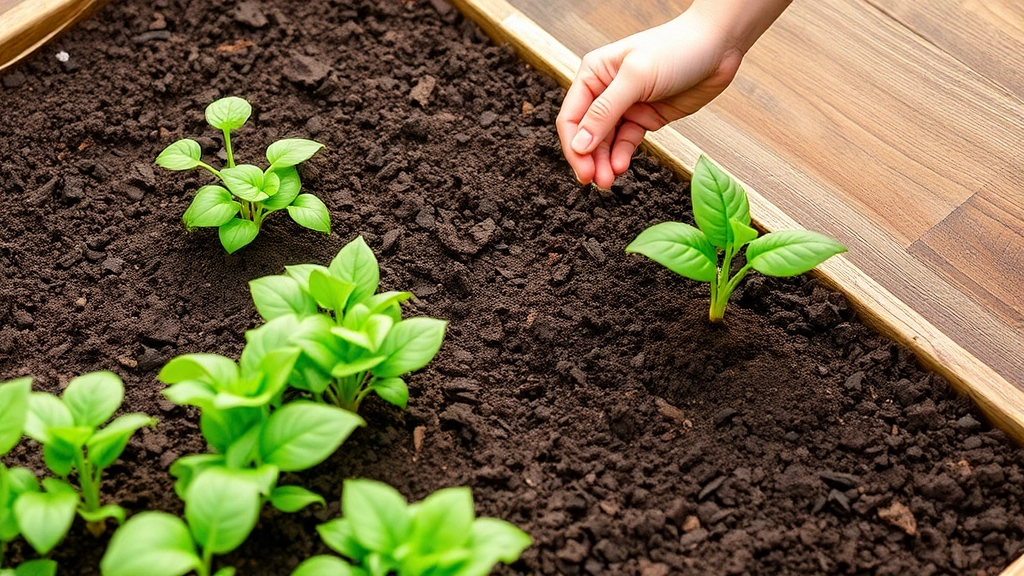
So, you’ve got your Mother of Thousands thriving, but how do you keep it looking its best?
Fertilizing is key to ensuring your plant stays lush and vibrant.
When to Fertilize:
- Spring and summer are the best times.
- Avoid fertilizing in the fall and winter when the plant is dormant.
Types of Fertilizers:
- Use a balanced, water-soluble fertilizer.
- Look for a formula with equal parts nitrogen, phosphorus, and potassium (like a 10-10-10).
How to Apply:
- Dilute the fertilizer to half the recommended strength.
- Apply it every 4-6 weeks during the growing season.
- Water the plant before applying to prevent root burn.
Signs Your Plant Needs Fertilizer:
- Yellowing leaves?
- Stunted growth?
- These could be signs it’s time to feed your plant.
Additional Tips:
- Always check the soil moisture before fertilizing; dry soil can lead to over-fertilization.
- If your Mother of Thousands is in a smaller pot, it may need more frequent feeding as nutrients can deplete faster.
IX. Pest Control: Common Issues and Solutions
As we explore the care of the Mother of Thousands plant, it’s crucial to address one of the most pressing concerns for plant enthusiasts: pest control.
Many gardeners worry about pests that can threaten the health of their beloved plants.
Common Pests
- Mealybugs
- Look for cotton-like clusters on leaves and stems.
- They suck sap and can weaken your plant significantly.
- Aphids
- Tiny, green or black insects found on new growth.
- They can cause curling leaves and stunted growth.
- Spider Mites
- Tiny, spider-like creatures that thrive in dry conditions.
- Look for fine webbing and yellowing leaves.
Solutions for Pest Control
- Regular Inspection
- Check your plants weekly for signs of pests.
- Catching issues early can prevent major infestations.
- Natural Remedies
- Neem Oil: Effective against many pests. Mix with water and spray on affected areas.
- Insecticidal Soap: A safe option that suffocates pests on contact.
- Physical Removal
- For mealybugs, use a cotton swab dipped in alcohol to remove them.
- Rinse aphids off with a strong stream of water.
- Maintain Healthy Conditions
- Ensure proper watering and light to keep your plant robust, making it less susceptible to pests.
For more detailed guidance on keeping your plants healthy, check out our essential Kalanchoe care tips for summer success and our comprehensive guide on Kalanchoe Panda Plant care.
Mother of Thousands vs. Mother of Millions: Key Differences
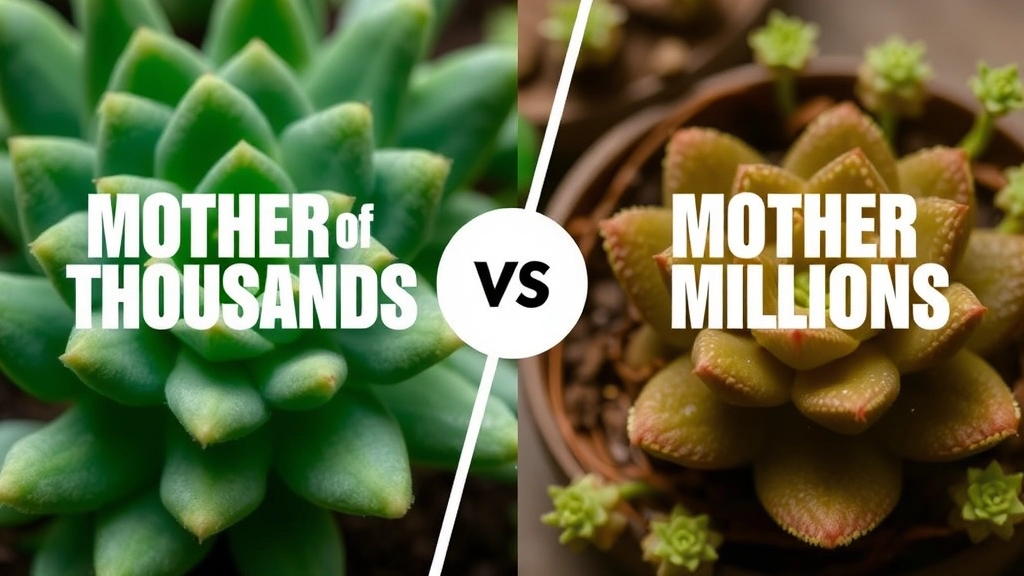
When diving into the world of succulent plants, you might find yourself wondering about the differences between Mother of Thousands and Mother of Millions.
Both plants are stunning, but they have unique characteristics that set them apart.
Key Differences
- Scientific Names
- Mother of Thousands: Kalanchoe daigremontiana
- Mother of Millions: Kalanchoe delagoensis
- Appearance
- Mother of Thousands: Features broad, fleshy leaves with tiny plantlets along the edges.
- Mother of Millions: Has narrower leaves that produce plantlets along the leaf margins, but they’re not as prominent as those on the Mother of Thousands.
- Propagation
- Mother of Thousands: Propagates easily from the plantlets that drop off the leaves.
- Mother of Millions: While it also propagates through plantlets, it can also produce seeds.
- Growth Habit
- Mother of Thousands: Tends to grow taller and can become bushy.
- Mother of Millions: Usually remains more compact and spreads out.
- Invasiveness
- Mother of Thousands: Known for its aggressive growth, often taking over garden spaces.
- Mother of Millions: Also invasive, but not as notorious as its counterpart.
- Toxicity
- Both plants can be toxic to pets and humans if ingested, but the toxicity levels can vary.
Understanding these differences can help you choose the right plant for your space. Whether you’re looking for a bold statement piece or a more subtle addition, knowing these details makes all the difference.
Overwintering Tips for Indoor and Outdoor Care
As we transition into the colder months, many plant enthusiasts worry about how to protect their beloved Mother of Thousands.
Indoor Care
For those keeping their Mother of Thousands indoors, here are some straightforward tips:
- Light: Place your plant near a south-facing window to ensure it receives ample sunlight. If natural light is limited, consider using grow lights.
- Temperature: Maintain a consistent temperature between 15-20°C. Avoid placing the plant near drafts or heating vents, as sudden temperature changes can harm it.
- Watering: Reduce watering frequency during winter. Allow the top inch of soil to dry out before watering again to prevent root rot.
Outdoor Care
If your Mother of Thousands is outside, it’s crucial to prepare it for winter:
- Location: Move the plant to a sheltered area, such as a garage or shed, if temperatures drop below 5°C.
- Mulching: Apply a layer of mulch around the base to insulate the roots from freezing temperatures.
- Watering: Similar to indoor care, cut back on watering. Ensure the soil is well-draining to avoid waterlogging.
General Tips
- Monitoring: Regularly check for signs of stress, such as wilting or yellowing leaves. Adjust care accordingly.
- Pest Control: Keep an eye out for pests during the winter months, as they can become a problem in warm, dry indoor environments.
For more detailed care information, you might find the Complete Care Guide for Kalanchoe Tubiflora helpful. Additionally, if you’re interested in other Kalanchoe varieties, check out the Top Fuzzy Kalanchoe Types for Your Garden.
Is Mother of Thousands Toxic? Safety for Pets and Humans
So, you’ve got a Mother of Thousands plant, and you’re wonderingâis it safe?
Let’s dive into the nitty-gritty of toxicity and keep your furry friends and family safe.
Toxicity Concerns
The Mother of Thousands (Kalanchoe daigremontiana) is known for its beautiful, cascading leaves and unique propagation method.
But here’s the scoop:
- Toxic to Pets: Yes, it can be toxic to cats and dogs. Symptoms may include vomiting, diarrhea, and lethargy.
- Human Safety: For humans, it’s generally not considered highly toxic, but it can cause mild digestive upset if ingested.
Precautionary Measures
To keep everyone safe, consider these tips:
- Placement: Keep your plant out of reach of pets and small children.
- Education: Teach kids about not touching or eating plants without asking an adult.
- Immediate Action: If you suspect ingestion, contact a vet or poison control right away.
What to Watch For
If your pet does get into it, keep an eye out for:
- Vomiting
- Drooling
- Lethargy
- Diarrhea
These signs can help you act quickly if needed.
For more detailed care tips on similar plants, check out our Kalanchoe Tomentosa varieties care guide and learn how to keep your pets safe from Kalanchoe toxicity.
FAQs on Kalanchoe Mother Of Thousands
What are the ideal light conditions for a Mother of Thousands plant?
Bright, indirect light is best. The plant enjoys a cozy window with filtered light but can tolerate some shade. Regular rotation helps it grow evenly.
What temperature range is suitable for Mother of Thousands?
The plant thrives between 20-30°C (68-86°F). It should be brought indoors if temperatures drop below 10°C (50°F).
How often should I water my Mother of Thousands?
Water only when the top inch of soil feels dry, typically every 2-3 weeks. Use the soak-and-dry method for best results.
What are the signs of overwatering and underwatering?
Overwatering signs include yellowing leaves and mushy stems. Underwatering signs include shriveled or wrinkled leaves.
How can I manage the overgrowth of my Mother of Thousands?
Regular monitoring, physical removal of plantlets, container gardening, mulching, and using barrier methods can help control overgrowth.
When and how should I fertilize my Mother of Thousands?
Fertilize during spring and summer with a balanced, water-soluble fertilizer. Dilute to half strength and apply every 4-6 weeks. Avoid fertilizing during fall and winter.
What are the key differences between Mother of Thousands and Mother of Millions?
Mother of Thousands (Kalanchoe daigremontiana) has broad, fleshy leaves with plantlets along the edges, while Mother of Millions (Kalanchoe delagoensis) has narrower leaves with less prominent plantlets. Both are invasive, but Mother of Thousands is more aggressive.
Are Mother of Thousands and Mother of Millions toxic?
Yes, both plants can be toxic to pets and humans if ingested. Always handle with care and keep them out of reach of children and pets.
References
-
Gardening 101: Mother of Thousands (Kalanchoe daigremontiana)
-
How to Grow Mother of Thousands Indoors
-
Mother Of Thousands Plant Care: How To Grow Kalanchoe Daigremontiana
